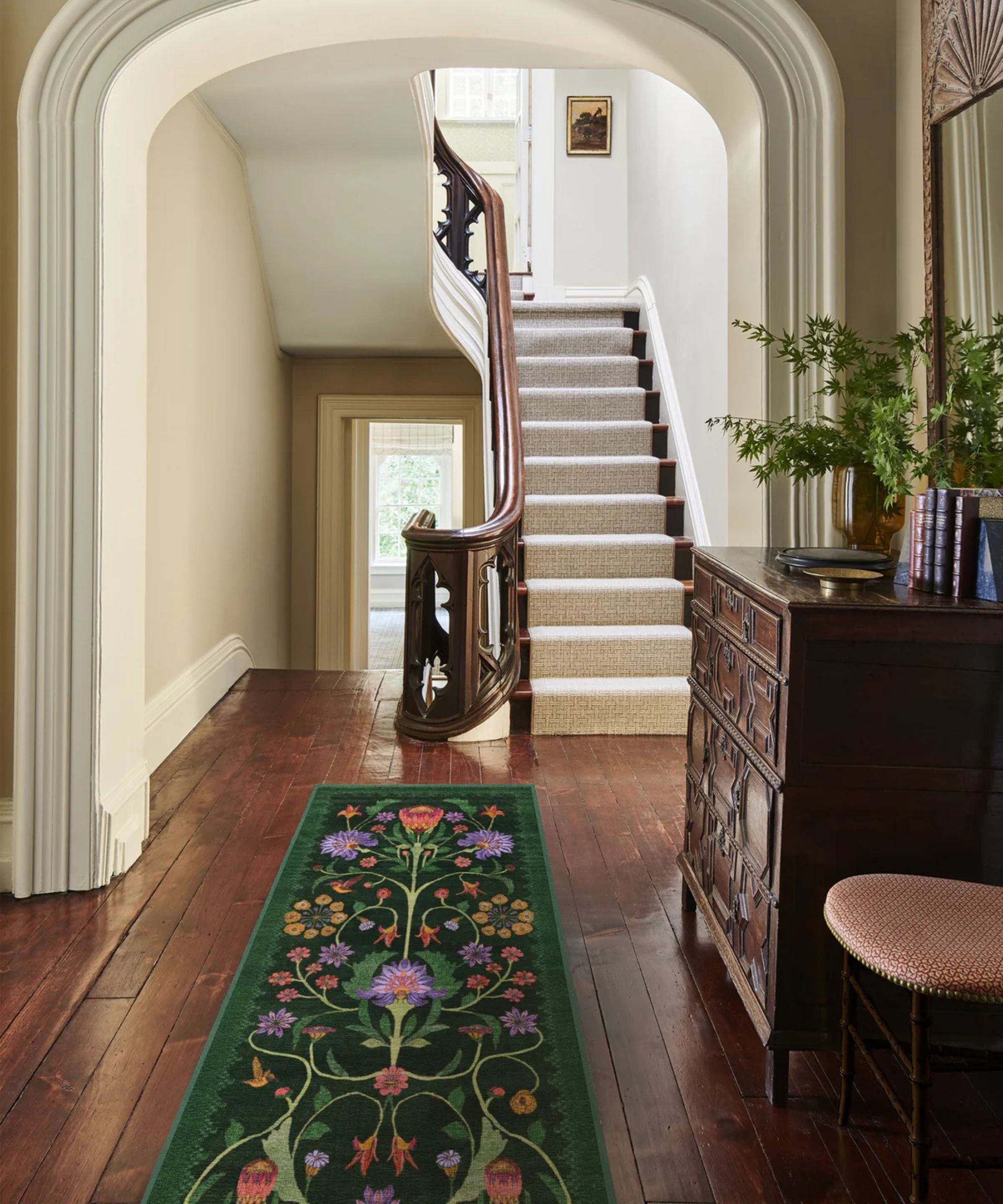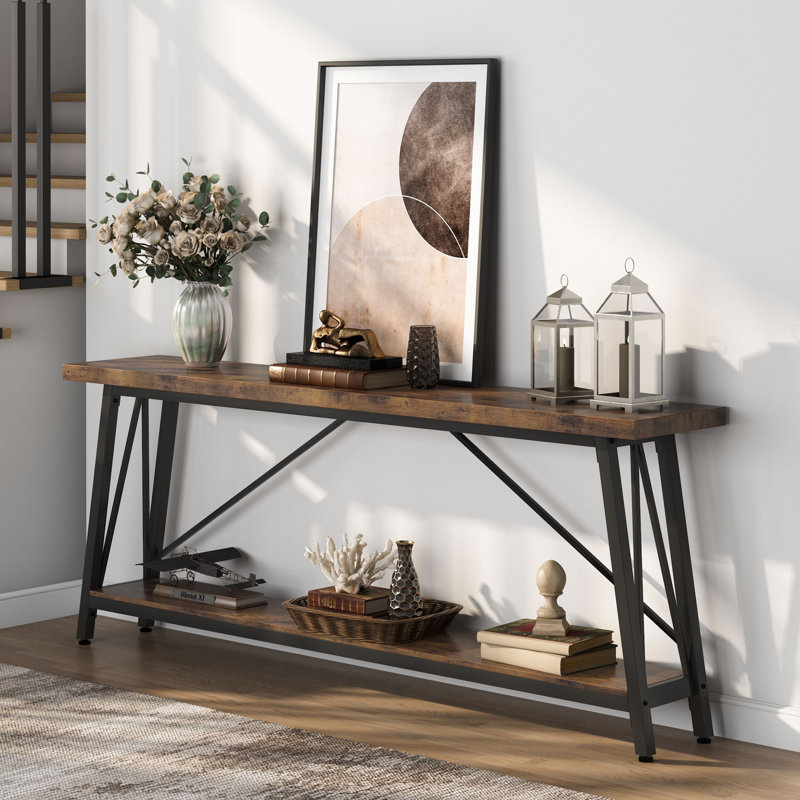6 things to never put in an entryway, according to interior designers
Set the right tone for your home by ditching these surprising pieces

The prices and stock levels of items featured in this article were checked and updated on 29 Dec, 2024, and new products added.
Entryways are notoriously tricky to furnish and decorate. They are the first thing you and your guests see when you walk through the front door, setting the tone for the rest of your home. They're also the place that you speedily rush out of, so they need to be neat and orderly with no obstacles blocking your exit.
Entryways are also often a transitional space between the other rooms in your home, so you want your decor to either blend in with or contrast against its adjoining areas.
There's a lot to think about here, so we're making it easy for you. We've chatted to interior designers to find out what they avoid using in an entryway. We must admit, some of their ideas surprised us, but they do make complete sense. Here is what to avoid...
1. A rug that's either chunky or slippery

Entryways are very often used for racing out the door, and you don't want anything to get in the way and slow you down. Many of the designers we spoke to state that different kinds of rugs are a no-go for entryways, and we can see why.
'I would never put a chunky rug in an entryway. They can be a trip hazard,' says Shani Core of Shani Core Interiors. 'If I use a less chunky rug in an entryway, I always use a rug pad to ensure it doesn't slip around. They're an absolute must for any high-traffic area.'
Lauren Gilberthorpe of Lauren Gilberthorpe Interiors, however, says that jute and sisal rugs should never be used in an entryway. 'These natural fibers may be popular, but they’re prone to staining, especially in an area where muddy shoes are common. Instead, choose a durable fabric rug that can withstand wear and tear. Look for options that are easy to clean and come in darker colors or patterns to disguise any marks,' she says.

If you like the colors of a jute rug, but are taking the above advice to avoid one in an entryway this Magnolia piece has all those lovely tones but also has a low pile, so much better for high-traffic areas.

Entryways can be tricky to add a ton of character to as they have to be so practical, so going bolder with your rug choice is a nice way to add a pop of color and pattern.

A clever trick for an entryway rug is to choose a design that already looks distressed, that way you won't notice the wear and tear it will inevitably face quite as quickly.
2. Open shelving

Open shelving is great for displaying treasured objects, but can quickly make entryways look cluttered, so closed entryway storage is best.
Design expertise in your inbox – from inspiring decorating ideas and beautiful celebrity homes to practical gardening advice and shopping round-ups.
'Open entryway shelves can quickly become cluttered with shoes, bags, and other items, detracting from the entryway’s appeal,' says Lauren. 'Instead, consider closed storage solutions that keep everything out of sight while still providing easy access. This helps maintain a clean and organized look.'
Shani has one storage ingredient that she loves using in most entryways. 'If the space allows, I like to use a console table with drawers and tuck away baskets underneath for storage,' she says. 'Isn’t it more welcoming to greet visitors with a pretty color, a designated place for purses and gifts, and a spot for keys and mail?!'

Pair with baskets from Wayfair for a tidy and functional entryway that doesn't look cluttered, but is stylish and useful.
3. A display of coats and shoes

It may seem like a good idea to install wall hooks by your front door to keep your coats within easy reach. But, chances are, this will end up looking more like a mountain of jackets than the stylized one-or-two coats you'd pictured.
'While practicality is important, certain elements can work against the overall aesthetic. For instance, an abundance of coat hooks, though functional, tends to create unnecessary clutter,' says Lucy Derbyshire, a founder at Studio QD. 'If space allows, concealed coat storage is a much better option, keeping the area tidy and giving the entryway a clean, spacious feel – perfect for a positive first impression.'
An entryway wardrobe is perfect for storing the whole family's coats and shoes. Once you've bought one of these you soon won't know how you ever lived without it.
4. Umbrella stands

In a similar vein to the wall hooks, designers would advise against including an umbrella stand in your entryway design.
'For me, umbrella stands are a big no. They can easily become cluttered and unsightly,' says Lauren. 'Instead, consider a stylish wall-mounted solution for hanging umbrellas, or a designated spot near the door that keeps them out of sight yet accessible, such as a decorative hook.'
Plus, your umbrella stand would very likely soon become an umbrella, hat, scarf, gloves and dog lead stand, and no one wants to see a mound of 'stuff' as soon as you walk through the front door.
5. A loose door mat

Designers suggest that an instant way to give your home a less high-end and less chic look, is to use a loose doormat in your entryway.
'Always avoid using a loose door mat that shifts around. Instead, choose an integrated mat that sits flush with your flooring,' says Lucy. 'This approach not only offers a more polished appearance, but also covers a larger surface area, making it more practical for everyday use while maintaining a seamless integration.'
Head of solved, Punteha van Terheyden has a built-in jute doormat in her small entryway. She says, 'This covers half the floor space in the area and has proven to be extremely durable and much more convenient than a loose one that slides around. Jute is easy to clean, too and I recommend using a brush with soft natural bristles, available at Amazon, to loosen dried dirt before vacuuming and cleaning.'
6. Excessive decor

Try not to overload your entryway to keep a clear and clutter-free gangway. 'While it’s tempting to fill the entryway with decorative items, too many can make the space feel cramped,' says Lauren. 'Keep it simple with one or two statement pieces, like a striking piece of artwork or a unique sculpture, to create visual interest without overwhelming the space.'
That said, your entryway needn't be boring. We love a statement wallpaper or one look-at-me piece of artwork in an entryway – a design that brings you joy is the best thing to come home to every day.
Your entryway needs to be the perfect balance of working hard and looking good, and knowing what to keep out of this (often small) space can be as useful as it is to know what to have in it. You want to keep it to the essentials and ensure whatever you do bring into your entryways has it's purpose.
If floor space is a sticking point in yours, learn more about organizing a small entryway.


